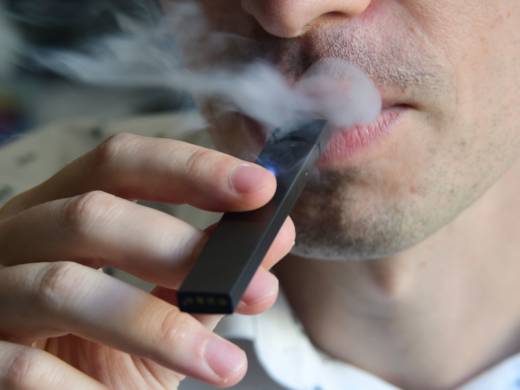Growing Up With E-Cigs
For the first phase of the study, researchers interviewed more than 700 students in ninth and 12th grade in 2014 and 2015. Follow-up questionnaires were completed by 445 of the participants, who were by then in the 12th grade or a few years out of high school.
Participants who used e-cigarettes also completed a separate questionnaire assessing their degree of nicotine dependence.
About half of all participants said they had heard of Juul, while about 16 percent said they had used it. Other e-cigarette brands were used by about 30 percent of participants, while conventional cigarettes were smoked by about 24 percent of participants.
About two-thirds of users reported using more than one type of product. Among those who had tried Juul, nearly 60 percent reported that they had used the product within the last 30 days.
By contrast, participants who had tried other e-cigarette brands or conventional cigarettes, about 30 percent and 28 percent respectively, reported use within the last 30 days — a striking difference between Juul users and users of other tobacco products.
Researchers also found that younger users were showing signs of addiction but not reporting it. In other words, there was a disconnect between what they were actually experiencing and their perception of the product's addiction potential.
Halpern-Felsher says the findings raise serious concerns about higher rates of addiction among Juul users. Especially since users expressed the view that Juul e-cigarettes are less harmful or addictive than the other products mentioned in the survey.
Juul e-cigarettes account for two-thirds of the nation's e-cigarette market. They contain more nicotine than competing brands of e-cigarettes, according to the study. Nicotine has been linked to cancer.
"It's not clear on the package how much nicotine is in there and how harmful nicotine can be," says Halpern-Felsher.
The label says it contains five percent nicotine, but to a young person that may not seem like much, according to Halpern-Felsher.
She says that Juul products contain 59 mg of nicotine per milliliter, which is comparable to about a pack-and-a-half to two packs of cigarettes.
Other forms of e-cigarettes have anywhere between 0 to around 36 mg per milliliter.
E-cigarette use in adolescents is particularly alarming since nicotine can change the brain of an adolescent, making it easier for the user to be calm while addicted to that substance.
As a result, Halpern-Felsher says there's a higher possibility of addiction during adolescence than if the user had started using the product as an adult.
Public Perception
Researchers blame marketing and advertisements for the gap between reality and public perception among younger users.
Juul has come under sharp criticism for designing e-cigarettes that appeal to the youth market. Their products use flavored nicotine-containing liquids, such as cool mint and dessert flavors, that are inhaled from colorful pods resembling USB flash drives.
The Food and Drug Administration recently launched a campaign to warn youths about the health risks and to stop Juul sales to young people.
Halpern-Felsher says that youth are more likely to use tobacco products that come in flavors. She notes that only one of the participants in the study used the plain tobacco flavor.
The study emphasizes the need for better public-health campaigns highlighting the health risks of e-cigarettes.
"Juul users aren't aware of the amount of nicotine in the product," says Halpern-Felsher. "We really need to have a discussion about the amount of nicotine in these products. "
She also recommends increased regulation of e-cigarette flavors and how they are advertised.
"Juul needs to report more accurately and in plain English," she says. "And in a way that everybody understands how much nicotine is in there."
